




Becomabee

Harnessing renewable, clean, sustainable energy from bees to solve energy poverty
Save Bees
Help Beekeepers
Support Community
Protect Ecosystem
Event
Solo Passion UX Project
Time Frame
February 2022 - March 2023
20 Weeks
Tools
Deliverables
Figma, Google Workspace,
Adobe CC, Keyshot, Rhino,
SolidWorks, Blender
Notion, Arduino, Miro
Final Product Design
Physical Demo Prototype
User Interface Prototype
Presentation and Pitch

Get the Highlights

The Problem
Solution

Our Goal

The issue involves insufficient awareness about energy conservation and the threat of bee extinction, exacerbated by habitat loss. This poses challenges for both beekeeping and low-income communities struggling with limited access to affordable electricity, contributing to disruptions in ecosystems and economic stability.


Monoculture Farming
Pesticide and Parasite
Lack of Natural Resources

The project aims to generate affordable and clean energy from bees while creating secure habitats for them without detrimental effects. It addresses critical concerns like habitat fragmentation, food security, climate change, biodiversity, and human well-being.

This project harnesses clean energy from urban bees, generating electricity while raising climate awareness. By establishing new habitats and encouraging beekeeping, it aims to expand bee populations and channel the accumulated energy to areas with limited power access.
A detection system that identifies potential threats to bees and a 3D monitoring and curing device that helps reduce bee stress.
Hygrometer
Thermometer
Thermal Camera
Accelerometer



Monoculture Farming
Pesticide and Parasite
Lack of Natural Resources

Beekeepers
Bees

Hygrometer
Thermometer
Thermal Camera
Accelerometer
Delivers data to beekeepers and connects them to an interface that interacts with their day-to-day activities.
Beekeepers remotely inspect their hives, receive detailed info, and view real-time hive behavior predictions.


Target Audience


My Role
Solo Project with help from 3 more UX Design students for prototype
As the Project Lead, I was responsible for overseeing all parts of the project in different capacities.
I was in charge of team organization, as well as driving meeting agendas - making sure we were constantly meeting our users' needs and were aligned to our research throughout the UX process.
As lead, I was also responsible for driving the UX, including designing mobile app wireframes, information architecture, and physical product interfaces. I ensured that our user insights were tightly knit into our product so that we could create something truly impactful for users.
Endorsements
"The perplexing phenomenon of unexplained bee deaths remains unresolved. I am aware of your project's shift from a broad objective of saving bees to a more targeted focus on assisting beekeepers in their responsibilities. This strategic approach demonstrates clever thinking, and I am impressed by how your team centered the capstone project around bees. This topic holds immense significance and deserves the heightened attention it's receiving."

Keith S. Delaplane | Program Director
Walter B. Hill Fellow and Honey Bee
"I'm impressed by your team's approach to the bee topic. Your project fills a crucial need, and I would certainly make use of it. I can't wait to see more talents creating solutions for problems that seem unsolvable."
Julia Mahood| Master Craftsman Beekeeper
Georgia Beekeeper Prison Program

"I appreciate the practical applications that were integrated into the Rive project, which aims to safeguard honey bee populations from disease-related decline. Furthermore, I commend the project's valuable contributions to our comprehension of bee biology through engagement with beekeepers. Your extensive research is evident, and the robust support behind your creation is remarkable. I especially loved the prototype."
Dr. Marla Spivak | Entomologist, Professor
University of Minnesota bee lab

Why this? Why now? Why me?
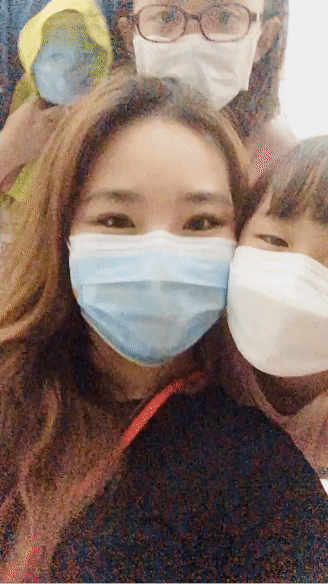

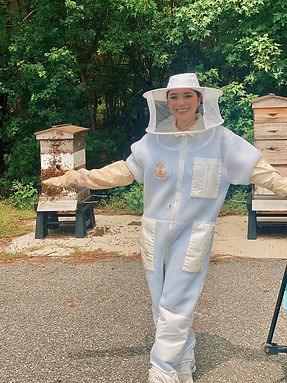
%20(1)_edited.png)
NGO (Non-Governmental Organization
SCAD Hong Kong in Sham Shui Po
SCAD Back 40 Bee Farm
The project name Beecomabee means "become a bee" and represents the immense time I spent with bees during this project where I feel like I became one of them and how it encapsulates a journey, a transformation of stepping into the world of bees. A profound understanding of the bee ecosystem and its impact left me humbled and deeply moved by the magic they bring to our lives.
From the very beginning, I've held a special place in my heart for marginalized economic groups. These communities, burdened by systemic barriers, find themselves on the fringes of economic participation, facing challenges stemming from low income, lack of education, limited job prospects, and social exclusion. My empathy for their struggles is deeply personal, as I come from a background of homelessness. The blessings of meeting people who guided my education and well-being inspired me to recognize the privilege I had experienced. This truth has driven me and fueled my determination to change the narrative for those whose voices are often ignored.
During my journey through SCAD, majoring in UX design, I felt a calling to address the concerns of marginalized communities. This calling led me to live and work in the poorest districts of Hong Kong and Savannah, working closely with NGOs to gain an in-depth understanding of their needs and aspirations.
I observed their struggles, their needs, and their aspirations. I sought to understand the gaps, the voids that needed to be filled, and the hopes that lingered.
The name Beecomabee, Become a Bee, embodies my desire to become a bee, the one that may bring solutions and resources to aiding marginalized communities.
Through my design, through the energy of these incredible creatures, I found a way to bridge the gap. I became a bee in spirit, channeling my determination and creativity to uplift those who have been ignored for far too long. My mission is simple - to turn pain into impact, discomfort into change. Just like a bee gathers nectar to create sweet honey, I gather the strength of purpose and compassion to create a lasting impact. The discomfort that once plagued me as a young individual who struggled is now transformed into a force for good. Becoming a designer was a conscious choice driven by the need to advocate for those who cannot advocate for themselves. With creativity as my tool, to ensure the needs are met through innovative and meaningful solutions that lead to transformation.
With meticulous and empathetic UX research, I ensure that those - ranging from people to the smallest arthropods like bees- who often go unnoticed are supported, cherished, and empowered in ways they deserve.
Beecomabee is more than a project; it's a call to action, an embodiment of empathy, and a beacon of change.
Becomabee
Opportunity | Transformation | Connect
Overview
Beecomabee stands as a solitary yet profound UX project that beckoned me to synthesize and apply the entirety of my acquired design expertise as a student of UX design to create a project that defines what kind of designer I am with what passion and mission.
Initiated independently, this project was of such significance that SCAD (Savannah College of Art and Design) expressed interest in adopting it for a class and ongoing educational program within the institution.
Remarkably, Beecomabee garnered significant recognition by winning a prestigious Red Dot Award for Brands & Communication Design and IDA Awards for and Industrial & Life Science Design/Design For The Environment and Conceptual Products/Eco Design Products.
I was mentored by many Professionals throughout the project.
UX professionals from Google, Amazon, Meta, Microsoft, and the UN (United Nations).
Bee professionals from Universities, Bee Research and Extension Labs, Beekeepers, Entomologists, Bee Programs Directors, and Farmers.
Science and Engineering professionals from Universities.
Beecomabee is a project that harnesses bees' energy to generate clean, renewable, and affordable power using a prototype to address energy poverty. This initiative safeguards bees and creates secure habitats while providing sustainable energy for marginalized economic groups.
Becommabee concentrates on the linkages between bees and people to answer significant concerns: habitat fragmentation, food security, climate change, biodiversity, and human well-being.


Physical Prototypes
Target Audience: Bees

Eh? Me?
Yes, Bees!
😉
Bee Backpack
Side Prototype
Bee backpack filled with chips that make bees a living IoT
Sophisticated and ethical bee tracking system
Bee device to be used for educational tools, plant health assessment, and cross-disciplinary research

Parts of Backpack


Antenna
Buckle Strap
Camera
Sensors
Battery

Humans' Pick!
"Easy to distinguish"







Bees' Pick!
Bees' most preferred color in color test

What Consist the Backpack?
-
The bee backpacks measure 4.8 millimeters by 8 millimeters and weigh only 102 mg.
-
A tiny antenna, low-power localization system, sensors, camera and a battery capable of powering the system for seven hours.
-
The bee backpack doesn’t use GPS to provide location information. Instead, the localization system picks up radio signals that are broadcast from multiple antennas and uses differences in signal strength and transmission angles to triangulate the bee’s position.
Features

Sensors to track temperature, humidity, and light intensity as bees forage.
About 30 kilobytes of sensor data can be stored in the backpack system.
When the bees return to the hive, the data can be uploaded wirelessly via a backscatter antenna system and the batteries can be recharged wirelessly as well.
Equipped with a Camera for livestreaming information about the ecosystem, bee behavior study, bee health, disease detection, pollination tracking, and data analytics.
Backpack gives us an in-depth understanding of the natural selection process, environment, and bee behavior.
Unlike man-made drones, bees can fly for hours and can also sense things that electronic objects cannot.
Bee is going to be drawn to specific things, like the plants it prefers to pollinate.


Beehive
Main Prototype

-
Harvest and manage clean energy (static, thermal, kinetic) from the bees.
-
New innovative way to support the marginalized community with the power company through donating the natural resource generated by bees.
-
Supports sustainable energy generation, ensures the well-being of the bee colony, and contributes to environmental conservation efforts.
-
Comprehensive platform for collaboration, research, education, and sustainable practices.
Features
Science (Physics)
+
Engineering
Energy harvesting mechanism that equips the beehive with sensors and technology to capture the kinetic energy generated by bees' movement within the hive.
Energy management system that develops an intelligent system that manages the harvesting, conversion, and storage of Bee energy efficiently.
Electrostatic generators that convert captured static energy into usable electrical power.

Safety measures implemented to prevent any harm to the bees or users during energy harvesting and conversion processes.
Piezoelectric components within the hive's structure that could capture and convert energy from bee activities.
Thermoelectric generators convert heat into electricity utilizing temperature differentials between the prototypes's interior and the environment.

Integrate the hive with the Internet of Things (IoT) ecosystem (Bee Backpack) for remote monitoring, control, and data analysis.
Technology

Wireless charging capabilities, allowing the stored energy to be wirelessly transferred to compatible devices.
Bee-friendly design to ensure the hive's energy harvesting components don't disrupt the bees' natural behaviors and routines.
Share excess generated electricity with nearby devices or even contribute to local energy grids.
Ensure that the stored static energy can serve as an emergency power supply during low energy periods.
Social
Fosters Community engagement by allowing people to participate in energy generation, sharing their efforts, and contributing to environmental sustainability.
Environmental impact by supporting and helping the bees which could eventually bring positive impact to crisis.

Educational features to raise awareness about static energy, bee behavior, and the significance of sustainable energy sources.
Research collaboration with researchers and experts in the field to continuously enhance the energy harvesting technology and its benefits for bees and the environment.
What's Inside?
A detection system that identifies potential threats to bees and a 3D monitoring device that helps reduce bee stress.

Thermal Imaging
Fast Data Trasfer
AI Sensing
Modern Battery Power
Arduino Uno3
Plywood(laser cut)
Lithium Ion Battery
SHT30 Temperature And Humidity Sensor
Adafruit AMG8833 IR Thermal Camera
Motorized Slide Potentiometer x2
Electret Microphone
Screen
Wires



Hygrometer
Thermometer
Thermal Camera
Accelerometer
User Interface Prototype
Target Audience: Beekeepers
Delivers data to beekeepers and connects them to an interface that interacts with their day-to-day activities.
Beekeepers remotely inspect their hives, receive detailed info, and view real-time hive behavior predictions.
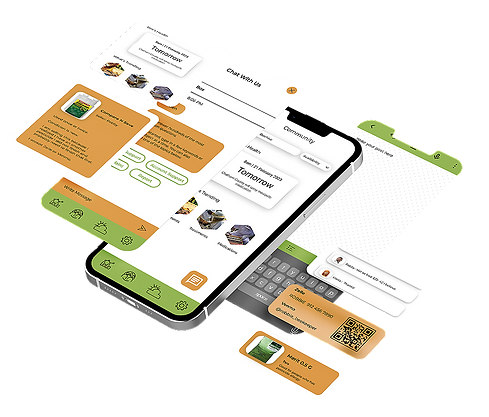
Click to Try RiVE Mobile App
Onboarding


My Data Analysis
My Environment
My Community
Homepage




My Data Analysis
-
Delivers data to beekeepers and connects them to an interface that interacts with their day-to-day activities.
-
Beekeepers remotely inspect their hives, receive detailed info, and view real-time hive behavior predictions.
-
Bee Journal features to keep track, administrate, and control the inputs of beehive and bee information.
-
Able to send questions and earn tips from local beekeepers through a chat feature by sending bee journal to them.
Bees
+41 more interactions






Bee Journal
+18 more interactions


My Environemnt
-
Able to track and understand the blooming, pollen, and nectar schedule for a better understanding of the environment to support bees.
-
Provide beekeepers with environmental information around them.
-
Be familiar with and predict the ever-changing environment around them that may impact the livelihood of the bees.




+10 more interactions
My Community
-
Host a positive and accessible forum for keepers to provide information and help one another
-
Easy access to local bee news and the ability to share beekeepers' needs
-
Convenient communication among the beekeepers and local news.




+11 more interactions
See the process of Technology UX|UI Design
Discover

Research Methods
Journey of Discovery to Solution (Contextual Research)
The Journey started with encountering the problem of bees and our high interest in Bee conservation led to ecosystem preservation.

1. Secondary Research
Objective:
Familiarize myself about bee, delve into existing solutions addressing bee extinction, and dissect the research into four distinct realms: Bee, Energy, Low-Income, Education, and Local Community, to define the core problem areas.


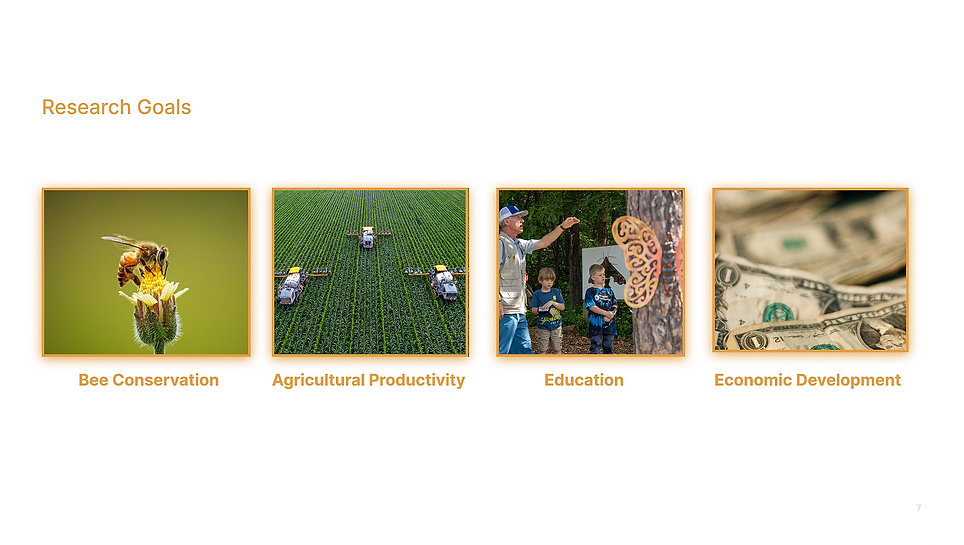
Research Goals
Bee Conservation
Agricultural Productivity
Education
Economic Development
2. User Survey
Objective:
I wanted to gauge people's interest in bees and marginalized economic groups. Collect Quantitative + Qualitative data about individuals' energy consumption patterns and their interactions with bees. I sought to comprehend their familiarity with, encounters, and responses to bees, aiming to gain insights into their perspectives and experiences.
Survey Responses:
1604 Participants from Reddit Survey and Google Survey
56% Have Garden
83% Interested in learning about bees
44% Have not seen bees in a year
92% Have Positive View about Bees
62% Fear when Bees are Near
51% Comfortable with bees around
+ More Insights
.jpg)
3. User Interview
Objective:
I aimed to gather personal stories of people's interactions with bees, encompassing both positive and negative experiences as well as their energy consumption patterns. Additionally, I sought to explore people's perceptions of marginalized groups and their level of awareness about this community. Through interviews, I delved into the needs and energy consumption patterns of marginalized economic groups, as well as their thoughts on bees.
Interview Participants:
9 Participants
4. SME (Subject Matter Expert) Interviews
Objective:
I wanted to hear how people on the front lines care for bees and have a deep love for bees. I wanted to learn specifically what was working to combat problems the world and bees are facing and how I could implement it into a possible product. I also aimed to know about alternative energy for an audience in need of a reliable, affordable option for energy. I wanted to understand the alternate sources of energy and creation. I interview experts of low-income challenges to deeply understand and empathize with experiences, uncovering key obstacles, root causes, coping mechanisms, and strengths, while also seeking to raise awareness, inform initiatives, and promote social equity.
Interview Participants:
28 Participants - Bee enthusiasts, beekeepers, farmers, entomologists, environmental scientists, conservationists, urban planners, community leaders engineers, scientists, policymakers, environmental advocates, economists, sociologists, social workers, advocates, and philanthropists.




.jpeg)
.png)





+ More
5. Contextual Inquiries | Diary Studies
Objective:
I aimed to get deep insights into how bees might engage in a product, service, or application. I wanted to enhance and supplement these insights with my own observations and interpretations, and have collaborative partnerships with with NGOs, beekeepers, bee companies, farms, and institutions. I visited local shelters, churches, schools, and NGOs with the goal of deeply comprehending their daily experiences, the obstacles they face, and how they navigate those challenges. Additionally, I sought to pinpoint avenues for providing support and finding ways to empower these communities.
Participants:
8 groups with 21 site visits.




6. Cultural Probe
Objective:
I aimed to monitor and study people's energy usage patterns, as well as their reactions to the presence of bees in their surroundings. To achieve this, I established a public space resembling a house floorplan and invited individuals from different groups to demonstrate their energy usage behaviors while being surrounded by fake bees (bee mock-up toys and bee sounds playing in the background).
Participants:
Total of 12 participants - 8 student participants and 4 marginalized community individuals



7. Beekeeping | Gardening
Objective:
To engage in beekeeping and gardening as an experiential and observational endeavor, aimed at gaining an in-depth understanding of bee behavior, ecosystem dynamics, the vital role of bees in pollination and environmental sustainability, and the interactions with Flowers and Pollen. Also, I occasionally did user testing on bees to build bee-friendly prototypes for them. I wanted to make a home for bees that they actually would successfully live in.
Participants:
Bees from 8 different colonies







8. Materials and Visuals Exploration
Objective:
I conducted materials experiments to create innovative, sustainable, and bee-friendly beehive designs that prioritize the well-being of bees while enhancing their habitat and promoting their overall population health.
Participants:
Bees from 8 different colonies, 2 Mycelium experts, 1 Hemp expert, 1 glass technologist, 1 carpenter, and Collaboration with 2 Fibers Design Students and1 Accessory Design Student,


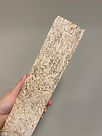









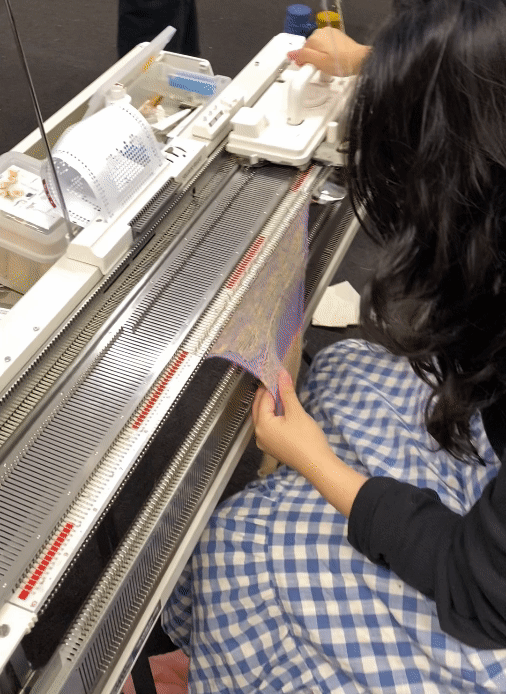
9. Science Experiments | Energy Experiments
.png)
Objective:
I conducted electricity experiments aimed at gaining a comprehensive understanding of energy transfer mechanisms and battery functionalities. These experiments will provide valuable insights and knowledge necessary for designing an effective and user-friendly UX project that harnesses and utilizes energy from bees to address energy poverty and environmental sustainability.
Participants:
Energy charge measurement, Understanding distribution of energy in beehive, charge transfer experiments., battery experiments, interaction with different materials, bee movements and its impact.
More research details and insights are protected.
Please reach out if you would like to learn more!

Define
Synthesizing Data
Data Analysis with Affinitization



Total of 2357 Data Points
579 Sentiments (What matters)
103 Themes (Key Issues)
43 Insights created (Core Stories)
5 Main Insights confirmed
Affinitization Using Pestel Analysis

2463 Data Points
77 Insights

Social

Environment

Economic & Technology

Pestel Links

To comprehend the interplay between economic, sociological, technological, and environmental factors in the context of understanding bees and beekeepers, we created a PESTEL link to extract corresponding insights.
By establishing this analytical link, we aimed to unearth the underlying causes of recurring pain points.
This approach helped us identify critical gaps and ultimately led us to distill our key insights.
This effort enables us to break the cycle of repetition and address the core issues more effectively.

Main Insights
1
The bee keeping community is very strong and want to share their knowledge of bees with the public.


2
Electricity should have a renewable and efficient option for all.
3
Low income can become a cycle throughout generations and the greatest challenge was energy poverty.
4
There is a commonality between bees and humans.
5
There has been a shift in bee health and behaviors over the years.
How Might we
1
2
3
4
5
How might we help bee experts educate the general public in the best way possible?
How might we obtain energy that is sustainable, efficient accessible, and renewable?
How might we help break the generational chain of poverty by distributing clean, secure and stable electricity?
How might we provide the opportunity space for both parties to collaborate and help each other's need?
How might we provide better conditions for bees to improve the their overall health and well-being of the hive?
"
How might we educate the general public to provide better conditions for bees to improve their overall health and well-being of the habitat and help the generational cycle of low income by obtaining sustainable, efficient, accessible, and renewable energy.
"
5 Whys
The decline of the Bee population trigger domino effect on the economy impacting marginalized economic groups
🤯
Why?!
The influence of bees on agriculture can result in economic repercussions, affecting marginalized economic communities.
😖
Why...
Reduction in biodiversity could lead to higher prices for essential commodities starting with agriculture.
😤
Why??
Bees pollinate about 71% of our food and extinction of bees would lead to the decline of plants, animals, and ultimately, humanity.
😱
WHY
Bee extinction causes a knock-on effect on whole ecosystems.
😭
Why!!
Bees are going extinct mainly because they are losing safe habitats due to environmental crises, pesticides, intensive agriculture, colony collapse disorder (CCD), and more unknown reasons.
Solution: Concentrate on the linkages between bees and people, finding a solution that answers significant concerns - the decline of the bee population and the resource limitations faced by marginalized economic groups which rise to a range of challenges such as habitat fragmentation, food security, climate change, biodiversity, and human well-being.
An Ethical Consideration to Address when Developing an Ethical Solution.
An ethical issue of why and how marginalized economic groups are paying the price.
Bees are not discriminating, crops are not discriminating. How come it is the low-income community being discriminated against?
The ethical dilemma of imposing stress on bees to achieve beneficial outcomes for humans.
Close Commonality Between Bees and Humans


Beehives


Low Income neighborhood
Low-income communities and bees both work tirelessly hard for survival yet they remain the most vulnerable to the impacts that ensnare them in ongoing hardships. These challenges perpetuate a cycle of adversity that affects their well-being, eventually reverberating across diverse species in the world.
During the site visit and research, I noticed striking similarities between both groups, which prompted me to recognize the potential for these two seemingly disparate communities to not only share common challenges but also complement each other's needs effectively.
Opportunity Space
"Symbiosis"

Generates the Energy
But
Losing Habitats
And
Thrives more in Urban Settings


Experience Energy Poverty
But
Have Homes
And
High-Interest Beekeeping
What could Beecomabee do?
-
Harnesses bees' energy to generate clean, renewable, and affordable power using a prototype to address energy poverty.
-
Initiate to safeguard bees and create secure habitats while providing sustainable energy for marginalized economic groups.
-
Allow researchers to analyze the effects of stress factors on bees and obtain all possible information on environmental conditions.
-
Provide ethical and creative solutions to bees and marginalized economic communities.
-
Create opportunities for bees and humans to co-exist anywhere.

Project Focus
Develop
Final Design Solution
Journey of Ideation to Implementation
The initiation of ideation was centered around unveiling a new realm of possibilities by providing an opportunity driven by the aspiration to facilitate ethical and creative design. A pivotal goal of the design process was to instill hope for transformative change. Lastly, the notion of forging connections between people and bees was a guiding principle, aiming to cultivate awareness and attention for both groups as the concept of design would showcase how bees and humans could collaborate to solve problems, thereby bringing diverse individuals together in a unified effort.
I implemented the inspiration of the Design Goals to the design as design ideology.
Opportunity | Transformation | Connect
Becomabee
Bee Backpack
Side Prototype
Inspiration 1
"May it be a bridge to bees and humans"
Biophilic Bridge



Bridge makes us move forward.
Bridge is supportive.
Bridge connects two separate places - A pathway between two points that might otherwise be disconnected.
Opportunity
Transformation
Connect
Inspiration 2
"Bees are travelers, they fly 40,000 miles"
Travelers with Guitars



Guitar allows one to express their emotions, thoughts, and creativity.
Guitar is a constant companion that shares moments of joy, reflection, and self-discovery.
Playing the guitar brings people together, fostering social connections and a sense of community.
Opportunity
Transformation
Connect



Front
Back
Side
Comes with 5 Different Colors





Fit Shot on Bees


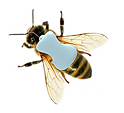


3D Print of the Prototype

Front

Back

Side

Side
Becomabee
Opportunity | Transformation | Connect
Beehive
Main Prototype
Inspiration
"Embracing the inherent form of the bees and beehive"
Biomimetic | Biomimetic Design



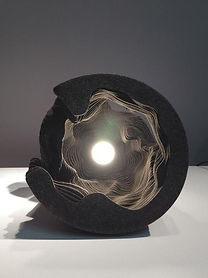
Biomimetic design signifies a radical transformation in how we approach innovation. It allows us to shed traditional methods, adopt a holistic perspective inspired by nature, and harmonize with the brilliance of natural systems.
Biomimicry connects us and the intricate solutions that have evolved over millions of years. Connection enriches our understanding, sparking a dialogue between nature's efficiency and our creative potential.
Biomimetic design provides an opportunity to revolutionize our technological landscape, invites us to reimagine, innovate, and apply nature's time-tested strategies to our challenges.
Opportunity
Transformation
Connect
How Bee Colonies Shape Itself and how it Leads to Final Design
Changes in the parameters of bees inside the hive result in differences in their physical forms due to their indirect interactions with each other through environmental modifications. This leads to alterations in behavior and the physical characteristics of the entire system, influenced by the traces or signals they leave behind.
%20copy.jpeg)

The UX research on materials like fabrics, glass, mycelium, and hemp, combined with garden work and observing plants and beekeeping at a bee farm, led to a final design that embodies a fluid and organic aesthetic.



The conventional skep hive shape essentially flips the bee's world upside down.
This form is not optimal for a hive and, from a technical standpoint, compels the bees to construct their hive upside-down.
Texture Design


Exterior Design
Wing venation texture
Wing folds

Shape Design
Poised and stable stance


Compound eyes and antenna

Shiny oval eyes

Pattern Design
Form of insect abdomen

Material
Mycelium
Opening : Energy harvesting mechanism and generators located


How does this work?
Bees Acquire An Electric Charge In Flight From Friction With The Air
As bees fly in the air
It beats its wings 200 times every single second
Rapid movement causes a collision
This collision helps bees carry a strong positive electrostatic charge
Flowers are negatively charged and pollens attract the positively charged bees
Their electric fields overlap and create a force of attraction
This force causes the negatively charged pollens to stick to the bee's hair
Creating an equilibrium
Bees then carry the electrical charges back to their hive

But how much energy could small bee can make?
One Single Bee Can Produce Voltages Of Up To 450 V
Bees' flapping wings create a positive electrical charge of up to 200 volts as they flit from flower to flower.
Measured by a calibrated electrometer array at a distance of 2–3 cm.
How amazing is this?

=
To boil a kettle, 300 volts is needed










Olympic cyclist with the highest output create 300 volts of power
=

One bee produces 450 volts

And There Are 60K - 80K Bees in One Hive
Now, you do the math. Isn't this mind blowing?
Why is this Design have to do with the Bee energy?
The small circular openings serve as entrances for bees to move in and out of the prototype. These circles also operate as energy harvesting mechanisms and generators, effectively harnessing energy from the bees as they pass through the circles.
This interaction prompts the bees to wiggle through the circular opening and make contact with the sensors, maximizing energy extraction.
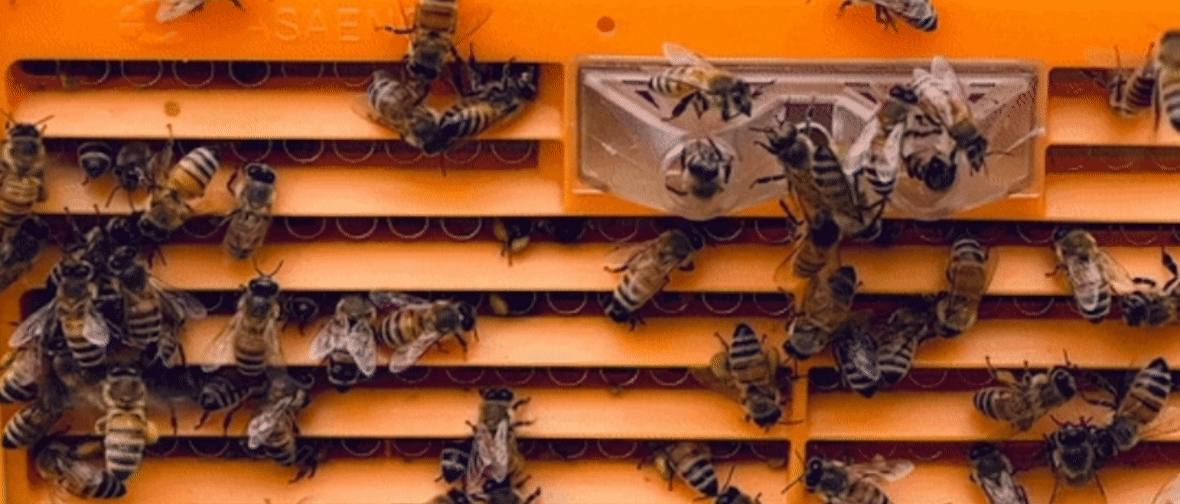
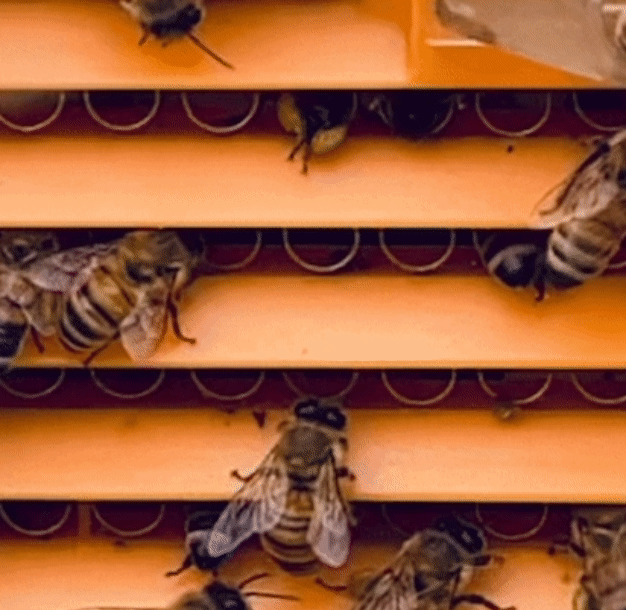
Why Use Mycelium as Material of Becomabee?
-
An alternative approach to conserving energy involves the sustainable production and consumption of prototypes.
-
Bolsters bees’ immune systems and helps protect them from disease and human-made toxins.
-
Mycelium imitates the cavity of the tree and it is a breathable material great serving as a breathable material ideal for both insulation and managing condensation, two key factors to a healthy hive.
-
Enhanced insulation not only promotes content and less stressed bees but also contributes to improved energy efficiency.
-
Mycelium is remarkably lightweight yet provides the benefits of wall thickness typically found in log hives. This makes it easy to install the hives in trees and ensures their longevity in these natural settings.
-
Mycelium is a biodegradable substrate material for sustainable electronics.
-
Encourages bees to pollinate forests more successfully.
Theory of Goals














Input
-
Make bees a living IoT as an ethical bee tracking system.
-
Creating mutually beneficial interactions between bees and marginalized economic groups.
-
Sustainable ways of harnessing clean, sustainable, and renewable bee energy.
Output
-
Able to harness energy with no detrimental effects on bees.
-
Empowering local marginalized economic groups through the provision of affordable and sustainable electricity sources
-
Collaborate with bees for educational tools, plant health assessment, and cross-disciplinary research.
-
Initiate safeguarding bees by improving bees' overall health and well-being of the habitat.
Short Term Outcomes
-
Inspiration for innovative methods of generating and obtaining sustainable, clean, accessible, and renewable energy.
-
Easier access to resources, sanitization, education opportunities, and connections for marginalized economic groups.
-
The interdependence between bees and humans, even without direct interaction, serves the mutual benefit of both species.
-
Promoting greater awareness and education about bees.
Vision
-
Thriving of bees by reestablishing safer living conditions for them.
-
Actively contribute to mitigating challenges such as habitat fragmentation, food security, climate change, biodiversity, and human well-being.
-
Tackling energy poverty in marginalized communities as a strategy to disrupt the cycle of economic marginalization.
-
Collaboration among stakeholders to promote the thriving of ecosystems.
Retrospect
What I learned
-
Designing UX solutions for nonhuman user takes some time and is complex. But the outcomes and insights are honest and straightforward.
-
It is important to address simple yet impactful problems that non-profits and causes require help with, ultimately contributing to increased support and donations.
-
I learned the importance of effective prioritization and focus during the ideation process. It highlights the need to streamline and refine my ideas, ensuring that the solution remains concise and aligned with the core objectives to avoid overwhelming complexity and to achieve a more manageable and impactful solution.
Takeaways
-
I want to test sooner and more often, even when the idea is not yet fully fleshed out.
-
I want to do a better job at keeping research throughout the project so that I can refer back to it at any time.
-
I aim to develop the courage to confront results that I might be tempted to overlook and to embrace vulnerability and self-empathy when assessing outcomes and progress.
"How did you come up with this project?
It's truly an exceptional and remarkable project. I'm eagerly looking forward to seeing this prototype brought to life. Your dedicated research efforts are commendable, and your determination to work on a project you're passionate about is impressive.
I remain devoted to helping assist you with science, so keep in touch."
David M. McGinnis | Ph.D and Professor
Savannah College of Art and Design
"I admire your visionary approach to this project. The idea of using a single bee to power a lightbulb in a developing country is truly fascinating. Imagine someone having honey and the ability to read at night simply because they have a beehive. Wow, this is cool. Harnessing wattage from bee energy is a concept I can envision, and it could very well be attainable. Your creativity knows no bounds."
Henry Reily-Collins | Technical Director, Engineers
Hallidays Hydropower


Thank You



